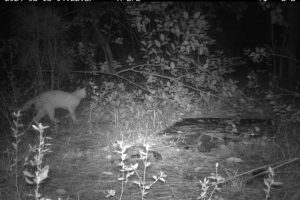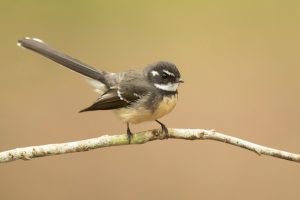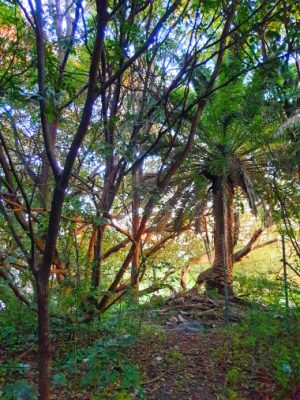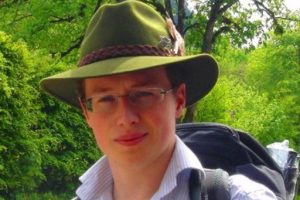By Andrew Wood, Convenor Blue Wren Subcommittee, 6/2024 August
The Subcommittee has 13 members and met on six occasions during the year. In June, a pair of wrens were seen by Elizabeth Dark, a member of the Orphan School Creek Bushcare Group, in a mix of lantana, planted acacias and a variety of weeds and grasses at the western end of Rozelle Bay (see article in this Bulletin). The sighting demonstrates the great importance of even small patches of flora in adding to wildlife corridors that permit small birds to move into and around Glebe and hopefully to permanently return.

Bushcare volunteers have very important roles in spending many hours caring for two of our parks. The Orphan School Creek Bushcare Group led by Judy Christie has 15 members and the Glebe Palmerston and Surrounds Landcare Group led by Anna Szanto has six. In addition, the Subcommittee keeps watching briefs over Rozelle Bay (David Lawrence), John Street Reserve (Norma Hawkins), Paddy Gray Reserve (Bryan Herden) and Harold Park / Johnstons Creek (Janice and Nick Sangster).


In 2022, the City of Sydney awarded the Society a $45,000 Innovation and Ideas Grant entitled Glebe’s Hill – unravelling its biodiversity secrets and potential. In November 2023, the Society signed the last of three Grant contracts (Approval Temporary Access over Council Land). The contract permitted the University of Sydney to commence its observations of fauna and flora at Glebe’s Hill and six other bush restoration sites in the local government area. The Society then transferred the approved grant funds to the University so that research work could commence on the project. An application to the City for an extension of time until December 2024 to complete work on the Grant was approved on 4 December 2023. By May this year the University’s wildlife cameras had recorded some of the animals using The Hill – ‘mainly some wide-roaming cats, a fox and a comical brushtail’. Also, they observed ‘some very happy silvereyes and a grey fantail there among the lantana’, two species of small birds that have not been sighted in Glebe for many years. The University gave a ‘walkshop’ on 28 July that commenced at the Tramsheds to give a progress report about their research and to take Society members to sites (The Hill and Johnstons Creek) where some of their cameras are located. A final report on their findings and recommendations about the future of The Hill will be given to the Society and the City at the end of November.

The Society’s 10th annual spring bird survey was held on a warm, sunny Sunday morning, 22 October 2023. The survey provides an annual snapshot of birds seen and heard between 7 am and 8 am in leafy and non-leafy sites across Glebe–Forest Lodge. Judy Christie led 21 people surveying in ten different groups, who reported 870 birds – several hundred more than in last year’s damp and overcast conditions. There were 30 different species and as in past years the most common were rainbow lorikeets (249) and noisy miners (176). Feral pigeons (rock doves: 99) were present in most parks. Pleasingly, the tree martins returned for breeding, and their animated twittering song was heard, especially near their nesting site on the corner of Ross Street and St Johns Road. Some areas, however, were notably quieter, including Blackwattle Bay, which could possibly be attributed to the ongoing development of the new Fish Market.
The Hon Stephen Kamper, MLA, NSW Minister for Lands and Property, announced a Statutory Review of the Crown Land Management Act 2016 to determine:
- whether the policy objectives of the Crown Land Management Act remain valid, and
- whether the terms of the Crown Land Management Act remain appropriate for securing those objectives.
The Society’s five-page submission was written by the Blue Wren and Planning Subcommittees and can be accessed from our website.
On 29 May, the Society’s 8th Annual Biodiversity Lecture was given by Professor Thomas Astell-Burt (Professor of Cities and Planetary Health, School of Architecture, Design and Planning, University of Sydney) at Benledi. The lecture, Regenerative Cities and Flourishing Communities: why more trees might mean less loneliness and better health, was supported by generous donations from Society members and local residents. Thomas described how an enormous amount of worldwide scientific research has already established what most of us know intuitively – that there are a range of physical, psychological and social health benefits – from getting out into nature and away from our digital devices. These health benefits include reduced blood pressure, cardiovascular disease and diabetes, reduced loneliness, better sleep, less dementia and better ‘social fitness’.

A walk or any physical activity in a natural environment is better than a workout in a gym or a Pilates studio. Despite this, one in three Australian adults spends less than two hours per week in any natural environment. Better-designed urban green spaces that address utility, functionality, aesthetics – and diversity in vegetation – will need to accompany increases in urban density for the health of humanity and future generations.








Join the conversation on Facebook.